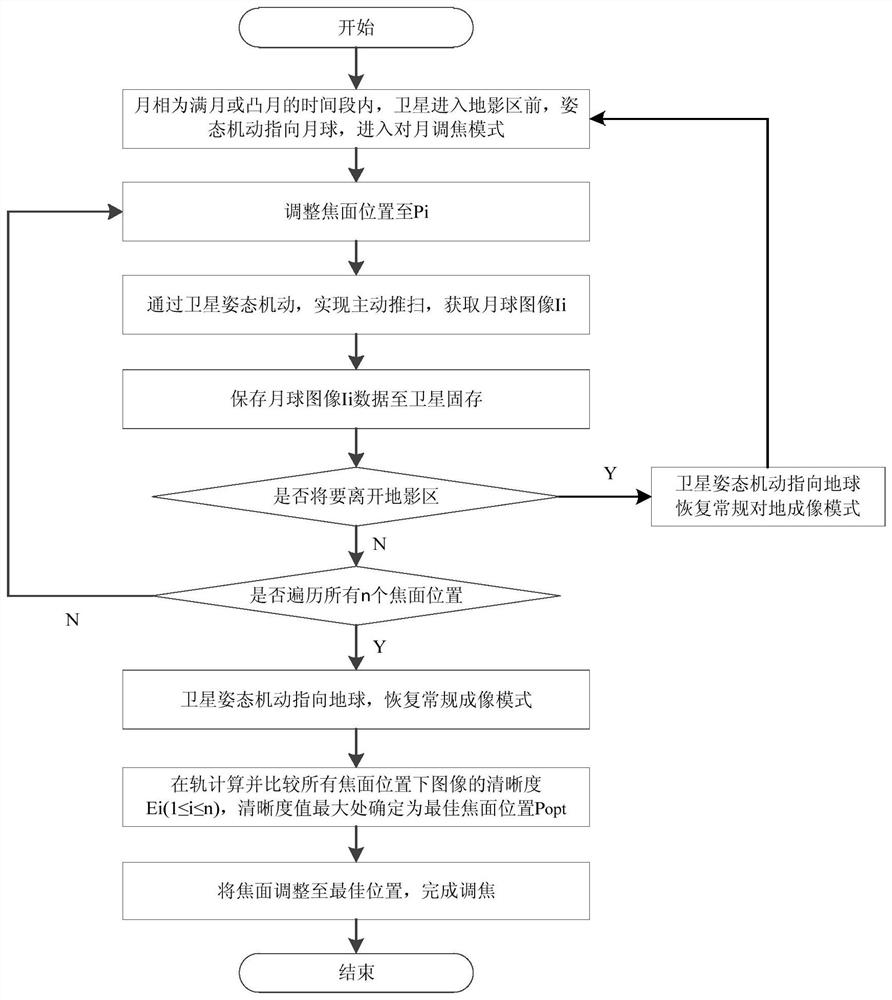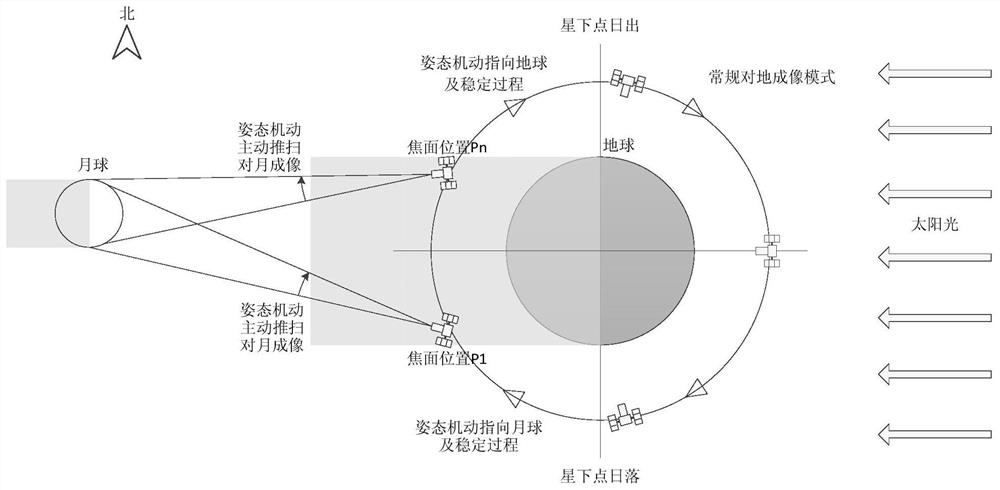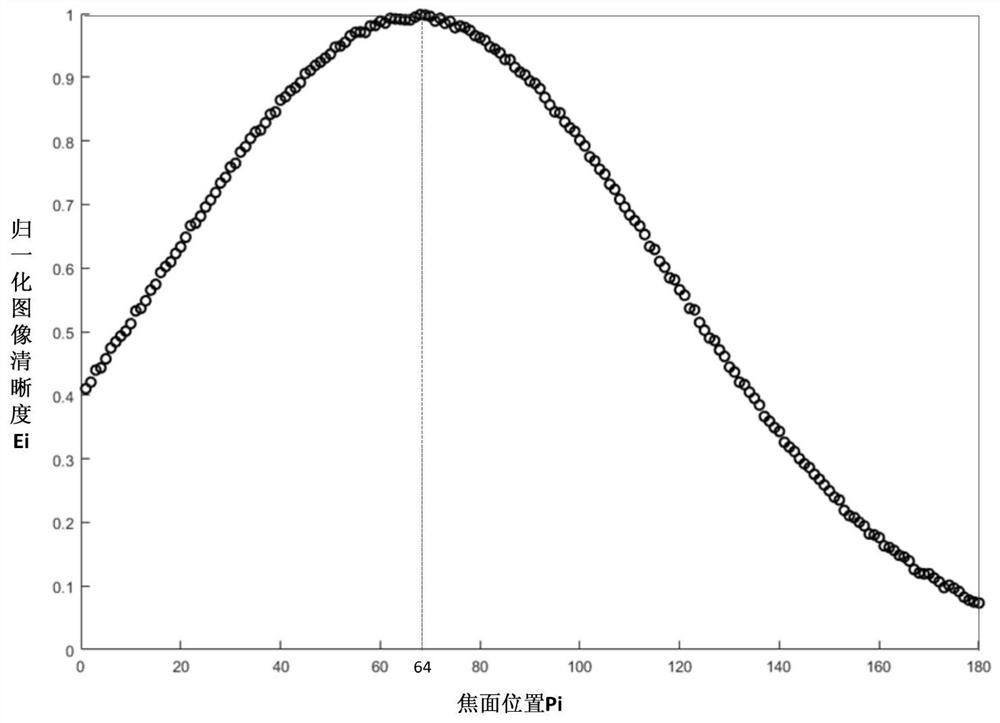Agile remote sensing satellite on-orbit autonomous focusing method based on lunar imaging
A remote sensing satellite and imaging technology, applied in the field of optical remote sensing satellite on-orbit focusing, can solve problems such as the influence of evaluation results, difficulty in obtaining images, and difficulty in regular monitoring methods, and achieve the effect of improving evaluation consistency and stable target characteristics.
- Summary
- Abstract
- Description
- Claims
- Application Information
AI Technical Summary
Problems solved by technology
Method used
Image
Examples
Embodiment
[0072] In this example, given that an agile remote sensing satellite is in a sun-synchronous orbit with an altitude of 640km, its orbital inclination is 98°, its flight speed is about 7.5km / s, and each orbit is in the shadow area for 35 minutes; the maximum attitude maneuvering speed of the satellite is 4.5° / s, the pointing stabilization time is less than 8 seconds; the pixel size of the satellite imaging payload is 7um, the focal length is 11000mm, the field of view is 1.34°, the default integration time is 60us, the focusing range is ±2mm, and the focusing step is 25um; During the focusing mission, the moon phase is full moon, the angle of the moon to the satellite is about 0.5°, and the distance between the stars and the moon is about 384,000km.
[0073] According to the formula, it can be calculated that the active push-broom speed is about 0.61° / s when imaging the moon, and the time required to complete a cycle of imaging the moon is about 9s; the total number of focal pl...
PUM
 Login to View More
Login to View More Abstract
Description
Claims
Application Information
 Login to View More
Login to View More - R&D
- Intellectual Property
- Life Sciences
- Materials
- Tech Scout
- Unparalleled Data Quality
- Higher Quality Content
- 60% Fewer Hallucinations
Browse by: Latest US Patents, China's latest patents, Technical Efficacy Thesaurus, Application Domain, Technology Topic, Popular Technical Reports.
© 2025 PatSnap. All rights reserved.Legal|Privacy policy|Modern Slavery Act Transparency Statement|Sitemap|About US| Contact US: help@patsnap.com



